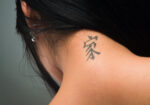Tips on Avoiding Blurred Photos

The movement in a photograph is nothing more than a sharpness defect in the image due to change of the subject photographed, the photographer (or both) during shooting. A photo can be moved or even partially. Generally, in the first case, the picture will be wrong because no element will be clear and well decipherable. In the second case instead (partial blur), the picture could also be correct, as we will have a static reference and a “blur” element, which however will give the sense of movement to the image.
How to Avoid Motion Blur
The first method to keep the camera from moving while shooting is quite intuitive and straightforward: use the tripod. A classic example would be when photographing a landscape. In this case, the use of a tripod will undoubtedly increase the sharpness of our image. But we will not always have support to lock our camera. So what alternatives do we have? Well, now we know that the blur is due to an element (photographer or subject) that moves during the shot. Therefore, to avoid the blur without having a tripod available, we can use a shutter speed sufficiently short to “freeze” the movement mentioned above. And since now we have also learned that in photography there is a rule for practically everything, we expect that there is also one to avoid the freehand blur, and there is! The practice in question requires the use of a shutter speed equal to (or faster) than the reciprocal of the focal length used. To be clear, if we are using a 50mm lens, we must not shoot slower than 1/60 of a second. With a 100mm, the minimum time becomes faster, equal to 1/125 of a second. If then we use a 200mm telephoto lens, we have to shoot slower than 1/250 of a second, and so on. You can check https://skylum.com/blog/how-to-use-macs-built-in-image-editor for more information on motion blur.











